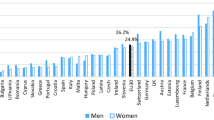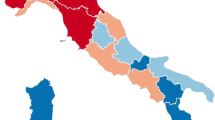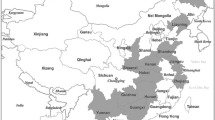Abstract
Employment-centered family policies enable parents to combine work and family, thereby improving work–life balance for individuals and families as well as increasing GDP. For these reasons, these policies constitute a central component of the social investment approach, a model for how to design social policies for contemporary societies. This study seeks to understand whether voters enable the expansion of these policies and therein promote social investment. The literature suggests that voters may reward governments that expand such policies for reducing work–life tensions at a relatively low cost. Yet support may wane if voters oppose mothers’ employment or face few opportunities to take up such policies (e.g., due to barriers to labor market entry). Left parties are found to gain from expanding day care but lose votes for expanding leave schemes, a finding which partially explains the vote losses for leave expansion before the activation turn. Generous day care and leave schemes in the social democratic regime entail an electoral logic, whereby governments escape vote losses for the expansion of leave schemes and gain from expanding day care. The remaining results do not reach statistical significance and should be interpreted with care.


Similar content being viewed by others
Notes
The dataset used to calculate these statistics is the Comparative Welfare States Data Set (2014).
The countries belonging to the remaining regimes are as follows. The Christian democratic regime includes these seven countries: Austria, Belgium, France, Germany, Luxembourg, Netherlands, and Switzerland. Whereas Switzerland and the Netherlands are sometimes placed in other regimes (Ferragina and Seeleib-Kaiser 2011), country experts clearly link them to the Christian democratic regime in terms of their family policy (Kremer 2007).The southern regime includes the four countries of Greece, Italy, Portugal, and Spain (Castles and Obinger 2008). The liberal regime includes seven countries: Australia, Canada, Ireland, Japan, New Zealand, UK, and the USA (Ferragina and Seeleib-Kaiser 2011).
For instance, the Balkenende I government in the Netherlands was not included in the analysis because of its short duration. The Kok I government was included, having been in power between August 22, 1994, up to the election on May 6, 1998.
The proposition that leave schemes are always employment-friendly requires some qualification since, past a certain duration, leave schemes inhibit labor market reentry. Calculating the optimal duration of leave for mothers’ employment is complicated since the effects are contingent on various aspects of policy design, though a recent study finds negative employment effects after 2 years of leave (Thévenon and Solaz 2013). There were eight observations where paid leave was longer than 2 years. Models were estimated whereby these observations were recoded as zero or dropped. The findings remain very similar. Model 2 becomes significant at the 0.10 level (instead of 0.05), and Model 4 becomes significant at the 0.05 level (instead of 0.01). It should be clarified that the ‘parental or home care’ leave can be available to one or both parents, although fathers’ take-up rates vary and can be very low in some contexts.
References
Amable, B. 2011. Morals and Politics in the Ideology of Neo-liberalism. Socio-Economic Review 9 (1): 3–30.
Anderson, C.J. 2000. Economic Voting and Political Context: A Comparative Perspective. Electoral Studies 19: 151–170.
Ansolabehere, S., J. Rodden, and J.M. Snyder. 2008. The Strength of Issues: Using Multiple Measures to Gauge Preference Stability, Ideological Constraint, and Issue Voting. American Political Science Review 102 (2): 215–232.
Armingeon, Klaus, Sarah Engler, Panajotis Potolidis, Marlene Gerber, and Philipp Leimgruber. 2011. Comparative Political Data Set, 1960–2008. Berne: Institute of Political Science, University of Berne.
Bonoli, Giuliano. 2013. The Origins of Active Social Policy: Labour Market and Childcare Policies in a Comparative Perspective. Oxford: Oxford University Press.
Bonoli, Giuliano, and Frank Reber. 2010. The Political Economy of Childcare in OECD Countries: Explaining Cross-National Variation in Spending and Coverage Rates. European Journal of Political Research 49 (1): 97–118.
Borchorst, Anette (ed.). 1994. Welfare State Regimes, Women’s Interests and the EC. SAGE: In Gendering Welfare States.
Brooks, C., and J. Manza. 2006. Social Policy Responsiveness in Developed Democracies. American Sociological Review 71 (3): 474–494.
Brennan, Deborah. 2007. Babies, Budgets, and Birthrates: Work/Family Policy in Australia 1996–2006. Social Politics: International Studies in Gender, State and Society 14 (1): 31–57.
Burger, Kaspar. 2010. How Does Early Childhood Care and Education Affect Cognitive Development? An International Review of the Effects of Early Interventions for Children from Different Social Backgrounds. Early Childhood Research Quarterly 25 (2): 140–165.
Castles, Francis G., and Herbert Obinger. 2008. Worlds, Families, Regimes: Country Clusters in European and OECD Area Public Policy. West European Politics 31 (1–2): 321–344.
Chung, Heejung and Meuleman, Bart. 2014. Support for government intervention in child care across European countries. In The transformation of care in European societies, ed. Margarita León, 104–133. Basingstoke: Palgrave Macmillan.
Connelly, Rachel. 1992. The Effect of Child Care Costs on Married Women’s Labor Force Participation. The Review of Economics and Statistics 74 (1): 83–90.
Döring, Holger, and Philip Manow. 2012. Parliament and Government Composition Database (ParlGov): An Infrastructure for Empirical Information on Parties, Elections and Governments in Modern Democracies. Version 12/10–15 October 2012.
Downs, Anthony. 1957. An Economic Theory of Democracy. New York: Harper.
Drobnic, Sonja, and Ana M. Guillén. 2011. Work-Life Balance in Europe: The Role of Job Quality. Basingstoke: Palgrave Macmillan.
Ellingsæter, Anne Lise. 2003. The Complexity of Family Policy Reform: The Case of Norway. European Societies 5 (4): 419–443.
Ellingsaeter, A.L., R.H. Kitterød, and J. Lyngstad. 2017. Universalising Childcare, Changing Mothers’ Attitudes: Policy Feedback in Norway. Journal of Social Policy 46 (1): 149–173.
Esping-Andersen, Gøsta. 1990. The Three Worlds of Welfare Capitalism. Princeton: Princeton University Press.
Esping-Andersen, Gøsta. 1999. Social Foundations of Post-Industrial Economies. Oxford: Oxford University Press.
Esping-Andersen, Gøsta. 2009. Incomplete Revolution: Adapting Welfare States to Women’s New Roles. Cambridge: Polity Press.
Estevez-Abe, M. 2005. Gender Bias in Skills and Social Policies: The Varieties of Capitalism Perspective on Sex Segregation. Social Politics: International Studies in Gender, State and Society 12 (2): 180–215.
Ferragina, Emanuele, and Martin Seeleib-Kaiser. 2011. Thematic Review: Welfare Regime Debate: Past, Present, Futures? Policy and Politics 39 (4): 583–611.
Ferrarini, Tommy. 2006. Families, States and Labour Markets: Institutions, Causes and Consequences of Family Policy in Post-War Welfare States. Cheltenham: Edward Elgar Publishing.
Ferrera, Maurizio. 1996. The ‘Southern Model’ of Welfare in Social Europe. Journal of European Social Policy 6 (1): 17–37.
Fiorina, Morris. 1981. Retrospective Voting in American National Elections. New Haven: Yale University Press.
Fleckenstein, Timo. 2010. Party Politics and Childcare: Comparing the Expansion of Service Provision in England and Germany. Social Policy and Administration 44 (7): 789–807.
Fleckenstein, Timo. 2011. The Politics of Ideas in Welfare State Transformation: Christian Democracy and the Reform of Family Policy in Germany. Social Politics: International Studies in Gender, State and Society 18 (4): 543–571.
Fleckenstein, Timo, and Soohyun Christine Lee. 2012. The Politics of Postindustrial Social Policy: Family Policy Reforms in Britain, Germany, South Korea, and Sweden. Comparative Political Studies 44: 1622.
Gauthier, Anne. 1996. The State and the Family: A Comparative Analysis of Family Policies in Industrialized Countries. Incorporated: Oxford University Press.
Gauthier, Anne. 2002. Family Policies in Industrialized Countries: Is There Convergence? Population (English Edition) 57 (3): 447–474.
Giger, Nathalie, and Moira Nelson. 2011. The Electoral Consequences of Welfare State Retrenchment: Blame Avoidance or Credit Claiming in the Era of Permanent Austerity? European Journal of Political Research 50 (1): 1–23.
Guo, Jing, and Neil Gilbert. 2014. Public Attitudes Toward Government Responsibility for Child Care: The Impact of Individual Characteristics and Welfare Regimes. Children and Youth Services Review 44: 82–89.
Hakim, Catherine. 2000. Work-Lifestyle Choices in the 21st Century: Preference Theory—Preference Theory. Oxford: OUP Oxford.
Hall, P., and D. Soskice. 2001. Varieties of Capitalism: The Institutional Foundations of Competitiveness. Oxford: Oxford University Press.
Hochschild, Arlie Russell. 1995. The Culture of Politics: Traditional, Postmodern, Cold-Modern, and Warm-Modern Ideals of Care. Social Politics: International Studies in Gender, State and Society 2 (3): 331–346.
Hook, J.L. 2015. Incorporating ‘Class’ into Work–Family Arrangements: Insights from and for Three Worlds. Journal of European Social Policy 25 (1): 14–31.
Huber, Evelyne, Charles Ragin, and John D. Stephens. 1993. Social Democracy, Christian Democracy, Constitutional Structure, and the Welfare State. American Journal of Sociology 99 (3): 711–749.
Huber, Evelyne, and John D. Stephens. 2000. Partisan Governance, Women’s Employment, and the Social Democratic Service State. American Sociological Review 65 (3): 323–342.
Huber, Evelyne, and John D. Stephens. 2001. Development and Crisis of the Welfare State: Parties and Policies in Global Markets. Chicago: University of Chicago Press.
Huo, J. 2009. Third Way Reforms: Social Democracy after the Golden Age. Cambridge: Cambridge University Press.
Inglehart, Ronald. 1977. The Silent Revolution: Changing Values and Political Styles Among Western Publics. Princeton: Princeton University Press.
Inglehart, Ronald, and Pippa Norris. 2000. The Developmental Theory of the Gender Gap: Women’s and Men’s Voting Behavior in Global Perspective. International Political Science Review 21 (4): 441–463.
Iversen, Torben, and Frances Rosenbluth. 2008. Work and Power: The Connection Between Female Labor Force Participation and Female Political Representation. Annual Review of Political Science 11 (1): 479–495.
Jaumotte, Florence. 2003. Labour Force Participation of Women: Empirical Evidence on The Role of Policy and Other Determinants in OECD Countries. OECD Economic Studies 2003 (2): 51–108.
Jost, John T., Christopher M. Federico, and Jaime L. Napier. 2009. Political Ideology: Its Structure, Functions, and Elective Affinities. Annual Review of Psychology 60 (1): 307–337.
Kamerman, Sheila B., and Peter Moss. 2009. The Politics of Parental Leave Policies: Children, Parenting, Gender and the Labour Market. Bristol: The Policy Press.
Kangas, Olli E. 1997. Self-Interest and the Common Good: The Impact of Norms, Selfishness and Context in Social Policy Opinions. The Journal of Socio-Economics 26 (5): 475–494.
Key, Valdimer Orlando. 1966. The Responsible Electorate: Rationality in Presidential Voting, 1936–1960. Cambridge: Harvard University Press.
Kittilson, Miki Caul. 2008. Representing Women: The Adoption of Family Leave in Comparative Perspective. The Journal of Politics 70 (02): 323–334.
Knudsen, Knud, and Kari Wærness. 2001. National Context, Individual Characteristics and Attitudes on Mothers’ Employment: A Comparative Analysis of Great Britain, Sweden and Norway. Acta Sociologica 44 (1): 67–79.
Korpi, W. 1980. Social Policy and Distributional Conflict in the Capitalist Democracies. A Preliminary Comparative Framework. West European Politics 3 (3): 296–316.
Korpi, Walter. 2000. Faces of Inequality: Gender, Class, and Patterns of Inequalities in Different Types of Welfare States. Social Politics: International Studies in Gender, State and Society 7 (2): 127–191.
Kremer, Monique. 2007. How Welfare States Care: Culture, Gender and Parenting in Europe. Amsterdam: Amsterdam University Press.
Krosnick, Jon A. 1988. The Role of Attitude Importance in Social Evaluation: A Study of Policy Preferences, Presidential Candidate Evaluations, and Voting Behavior. Journal of Personality and Social Psychology 55 (2): 196–210.
Lambert, Priscilla A. 2008. The Comparative Political Economy of Parental Leave and Child Care: Evidence from Twenty OECD Countries. Social Politics: International Studies in Gender, State and Society 15 (3): 315–344.
Leitner, Sigrid. 2003. Varieties of Familialism: The Caring Function of the Family in Comparative Perspective. European Societies 5 (4): 353–375.
Lewis-Beck, M.S. 1988. Economics and Elections: The Major Western Democracies. Ann Arbor: University of Michigan Press.
Lewis, Jane. 1992. Gender and the Development of Welfare Regimes. Journal of European Social Policy 2 (3): 159–173.
Lewis, Jane. 2008. Children, Changing Families and Welfare States. Cheltenham: Edward Elgar Publishing.
Lipset, Seymour Martin. 1960. Revolution and Counterrevolution: Change and Persistence in Social Structures. Piscataway: Transaction Publishers.
Lipset, Seymour Martin, and Stein Rokkan. 1967. Party Systems and Voter Alignments: Cross-National Perspectives. New York: Free Press.
Lister, Ruth. 1995. Dilemmas in Engendering Citizenship. Economy and Society 24 (1): 35–40.
Mair, Peter. 1997. Party System Change: Approaches and Interpretations. Oxford: Clarendon Press.
Mischke, M. 2013. Public Attitudes Toward Family Policies in Europe: Linking Institutional Context and Public Opinion. Berlin: Springer.
Morel, Natalie, Bruno Palier, and Joakim Palme. 2012. Towards a Social Investment Welfare State? Ideas, Policies and Challenges. Bristol: Policy Press.
Morgan, Kimberly. 2005. The “Production” of Child Care: How Labor Markets Shape Social Policy and Vice Versa. Social Politics: International Studies in Gender, State and Society 12 (2): 243–263.
Morgan, Kimberly. 2006. Working Mothers and the Welfare State: Religion and the Politics of Work-Family Policies in Western Europe and the United States. Stanford: Stanford University Press.
Morgan, Kimberly. 2013. Path-Shifting of the Welfare State: Electoral Competition and the Expansion of Work-Family Policies in Western Europe. World Politics 65: 73.
Morgan, Kimberly, and Kathrin Zippel. 2003. Paid to Care: The Origins and Effects of Care Leave Policies in Western Europe. Social Politics: International Studies in Gender, State and Society 10 (1): 49–85.
Nannestad, P, and P. Martin 1994. The Vp-Function: A Survey of the Literature on Vote and Popularity Functions after 25 Years. Public Choice 79: 213–245.
Nieuwenhuis, R., Van Lancker, W., Collado, D., and Cantillon, B. 2016. Has the Potential for Compensating Poverty by Women’s Employment Growth Been Depleted? ImPRovE Working Paper No. 16/02. Antwerp: Herman Deleeck Centre for Social Policy-University of Antwerp.
Nygård, M., and N. Krüger. 2012. Poverty, Families and the Investment State: the Impact of Social Investment Ideas on Family Policy Discourses in Finland and Germany. European Societies 14 (5): 755–777.
O’Connor, Julia S., Ann Shola Orloff, and Sheila Shaver. 1999. States, Markets, Families: Gender, Liberalism and Social Policy in Australia, Canada, Great Britain and the United States. Cambridge: Cambridge University Press.
Orloff, Ann. 1993. Gender and the Social Rights of Citizenship: The Comparative Analysis of Gender Relations and Welfare States. American Sociological Review 58 (3): 303–328.
Pettit, B., and J. Hook. 2005. The Structure of Women’s Employment in Comparative Perspective. Social Forces 84: 779–801.
Pierson, Paul. 1993. When Effect Becomes Cause: Policy Feedback and Political Change. World Politics 45 (04): 595–628.
Plantenga, Janneke, and Johan Hansen. 1999. Assessing Equal Opportunities in the European Union. International Labour Review 138 (4): 351–379.
Powell, G.Bingham, and Guy D. Whitten. 1993. A Cross-National Analysis of Economic Voting: Taking Account of the Political Context. American Journal of Political Science 37 (2): 391–414.
Sainsbury, Diane (ed.). 1994. Gendering Welfare States. London: SAGE.
Saraceno, Chiara. 1994. The Ambivalent Familism of the Italian Welfare State. Social Politics: International Studies in Gender, State and Society 1 (1): 60–82.
Schumacher, Gijs, Barbara Vis, and Kees Van Kersbergen. 2013. Political Parties’ Welfare Image, Electoral Punishment and Welfare State Retrenchment. Comparative European Politics 11 (1): 1–21.
Scruggs, Lyle, Detlef Jahn and Kati Kuitto. 2014. Comparative Welfare Entitlements Dataset 2. Version 2014-03. University of Connecticut & University of Greifswald.
Shin, Jungsub. 2016. The Consequences of Government Ideology and Taxation on Welfare Voting. Political Research Quarterly 69 (3): 430–443.
Steiber, N., and B. Haas. 2009. Ideals or Compromises? The Attitude-Behaviour Relationship in Mothers’ Employment’, Socio-Economic Review 7: 639–668.
Steiber, N., and B. Haas. 2012. Advances in Explaining Women's Employment Patterns. Socio-Economic Review 10: 343–367.
Strom, K., and W.C. Müller. 1999. Political Parties and Hard Choices. In Policy, Office or Votes? How Political Parties in Western Europe Make Hard Choices, eds. Strom, K., and W.C. Müller, 1–35. Cambridge: Cambridge University Press.
Thévenon, Olivier. 2008. Family Policies in Europe: Available Databases and Initial Comparisons. Vienna Yearbook of Population Research 6 (1): 165–177.
Uunk, W., M. Kalmijn, and R. Muffels. 2005. The Impact of Young Children on Women’s Labour Supply. A Reassessment of Institutional Effects in Europe. Acta Sociologica 48: 41–62.
Van Bavel, Jan. 2010. Choice of Study Discipline and the Postponement of Motherhood in Europe: The Impact of Expected Earnings, Gender Composition, and Family Attitudes. Demography 47 (2): 439–458.
Van Kersbergen, Kees. 1995. Social Capitalism: A Study of Christian Democracy and the Post-War Settlement of the Welfare State. Abingdon: Routledge.
Author information
Authors and Affiliations
Corresponding author
Rights and permissions
About this article
Cite this article
Nelson, M., Giger, N. Social investment by popular demand? The electoral politics of employment-centered family policy. Comp Eur Polit 17, 426–446 (2019). https://doi.org/10.1057/s41295-018-0117-2
Published:
Issue Date:
DOI: https://doi.org/10.1057/s41295-018-0117-2




